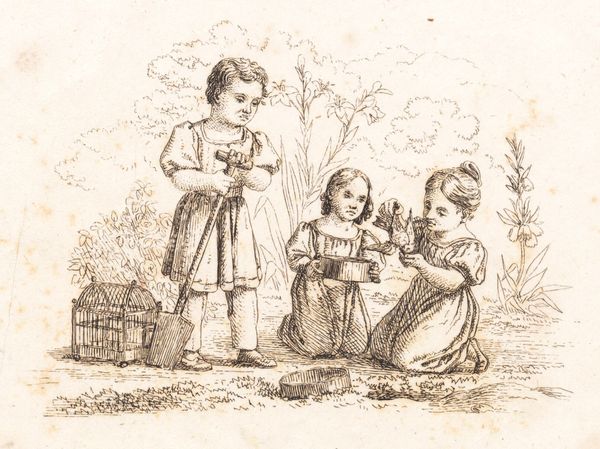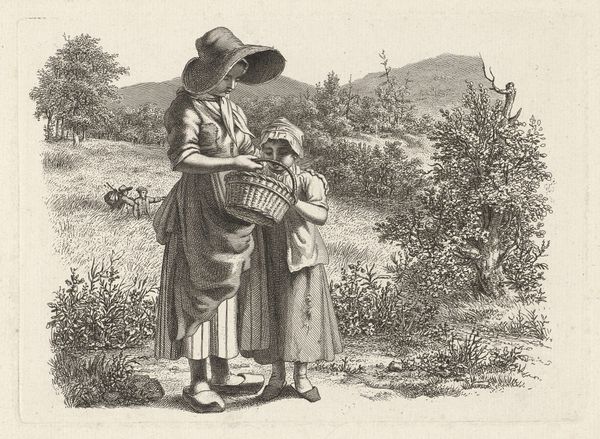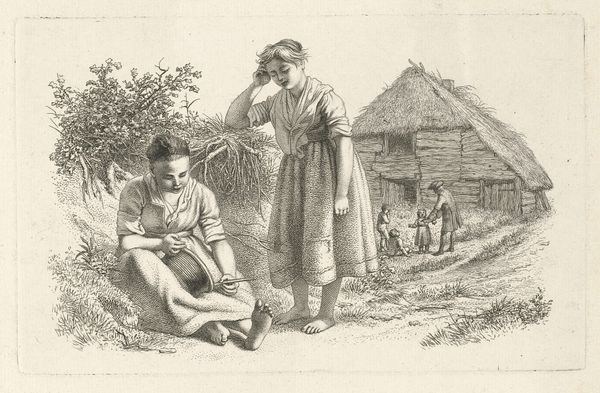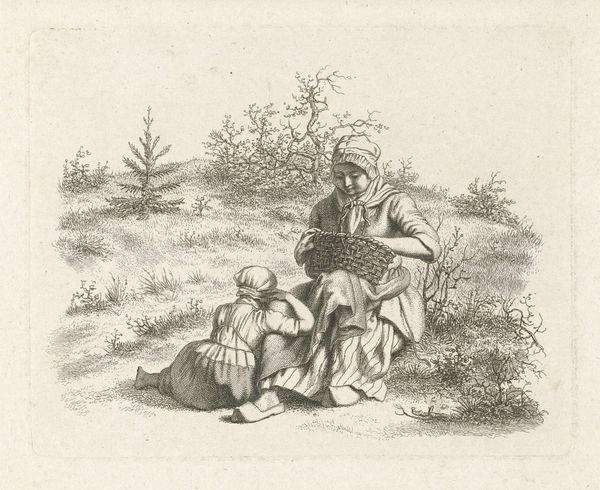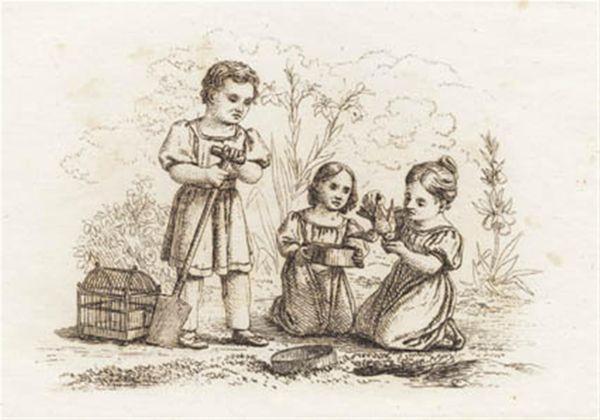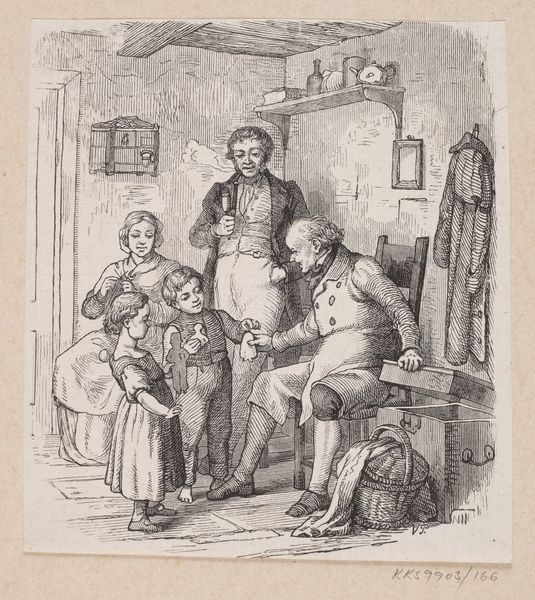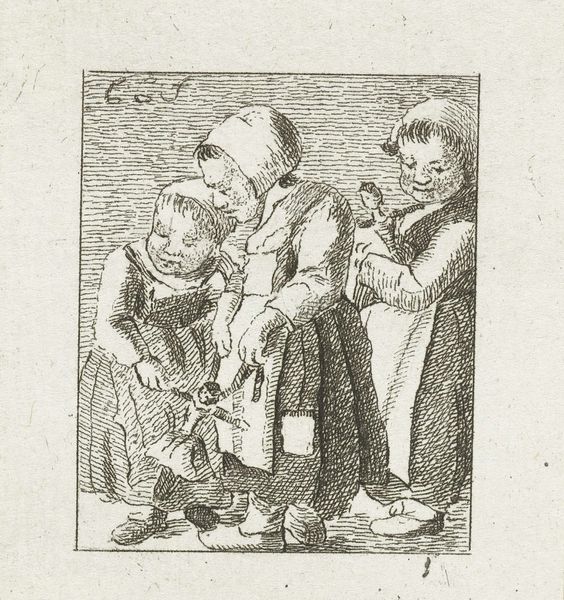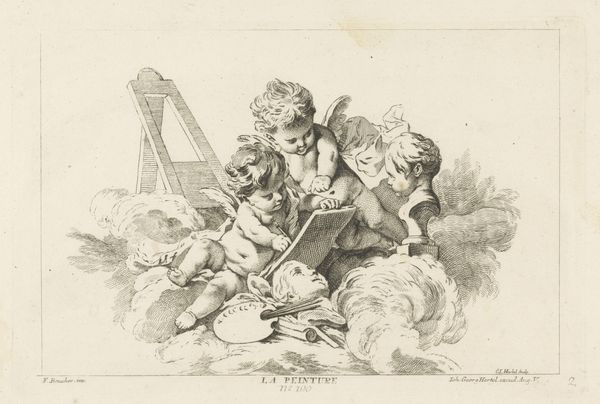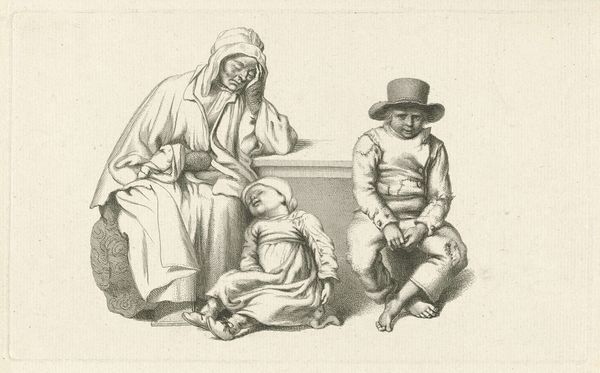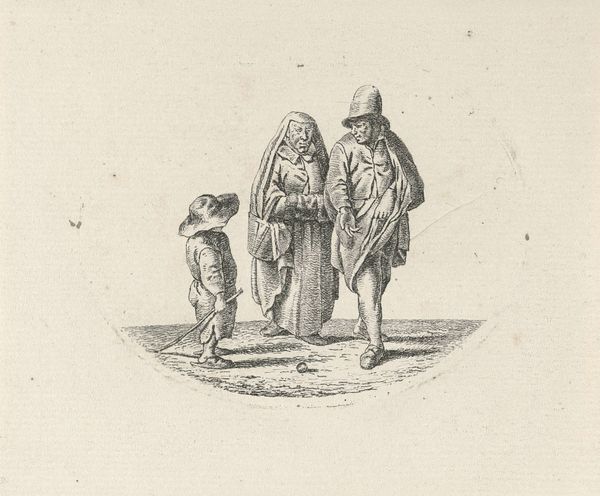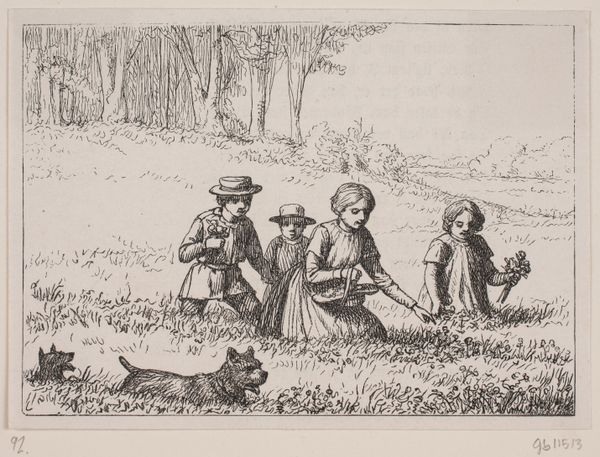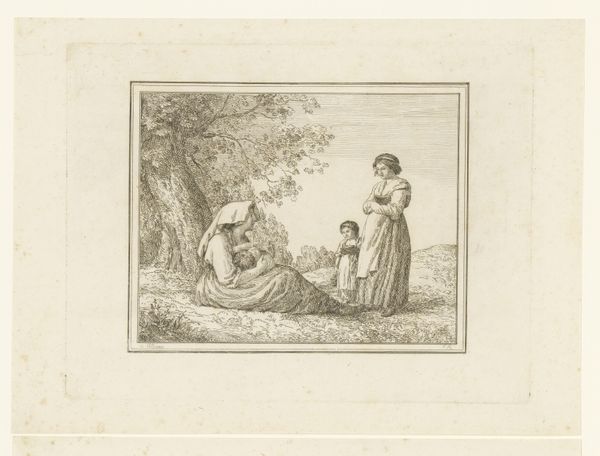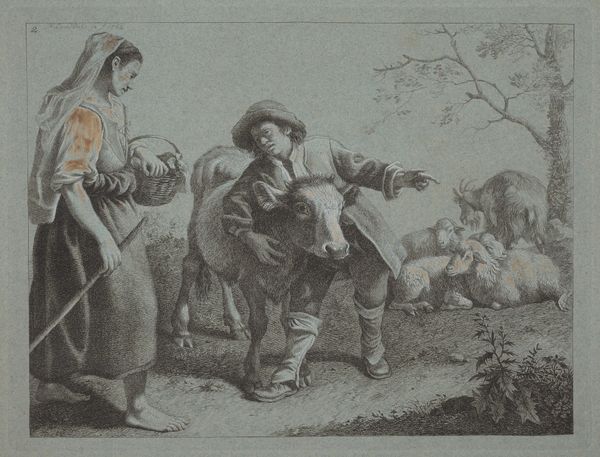
drawing, print, paper, pencil, engraving
#
portrait
#
drawing
# print
#
pencil sketch
#
paper
#
child
#
romanticism
#
pencil
#
genre-painting
#
academic-art
#
engraving
Dimensions: height 120 mm, width 175 mm
Copyright: Rijks Museum: Open Domain
Curator: This delightful print, currently residing here at the Rijksmuseum, is titled "Vrouw bij twee kinderen in stoeltjes," which translates to "Woman with two children in chairs." Jacob Ernst Marcus created this piece sometime between 1812 and 1818, utilizing pencil and engraving techniques on paper. Editor: My first thought? Pure pastoral sweetness. A quiet moment captured, but something feels…a little off, almost staged. They’re like adorable birds perched in wicker nests, presented for observation! Curator: Indeed. These genre scenes, so popular during the Romantic era, often depicted idealized versions of domestic life, steeped in sentiment. Notice the woman’s posture, slightly angled, drawing our eye to the fish dangling before the child in the back. The fish could symbolize providence. Perhaps the viewer should interpret how God will take care of you. It also is interesting that there are a lot of plants depicted, each which carries its own symbol too. Editor: So, it’s less a candid snapshot and more a symbolic performance? It's intriguing how that single fish shifts the entire tone. Also those peculiar chairs--baskets on stilts--add to the artificiality. Curator: It speaks volumes about the cultural values of the time—emphasizing maternal care and domestic tranquility. The choice of engraving, with its fine lines and subtle gradations, allows for delicate rendering of the figures’ expressions and the surrounding nature. The viewer sees order imposed upon nature, just as culture tries to do as well. Editor: There is also a curious ambiguity. Look how that older child's facial expression can almost be interpreted as melancholy. Even staged pleasantries can't entirely erase underlying anxieties. Even those awkward chairs! Do they constrain or secure? It all leaves you thinking. Curator: Precisely! The tension between ideal and reality, between representation and lived experience is one of the great and abiding artistic explorations across different art forms. Editor: A little manufactured maybe but very charming, a domestic tableau vivant frozen in time, that definitely tickles my mind in all sorts of directions. Curator: Agreed. It provides a fascinating window into early 19th-century notions of family, nature, and morality.
Comments
No comments
Be the first to comment and join the conversation on the ultimate creative platform.
